The Coming World War 2 1930-1942
History
Allies WWII
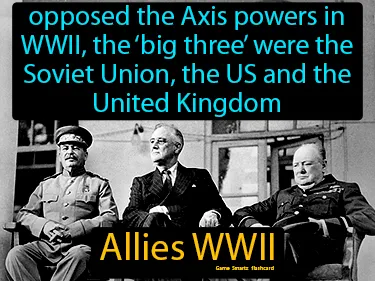
Opposed the Axis powers in WWII, the 'big three' were the Soviet Union, the US, and the United Kingdom. Allies WWII were countries that worked together to defeat the Axis powers during World War II.
Anschluss
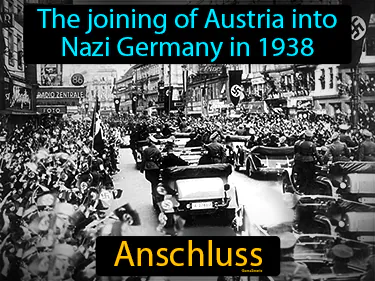
The joining of Austria into Nazi Germany in 1938. Anschluss. Anschluss was the annexation of Austria into Nazi Germany, where Austria became part of Germany in 1938.
anti-Semitic
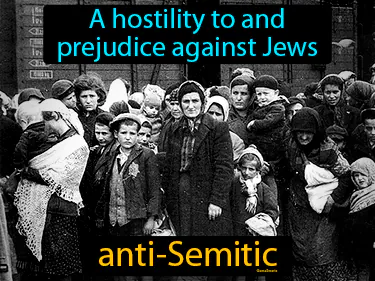
A hostility to and prejudice against Jews. Anti-Semitic. Throughout history, anti-Semitism has involved discrimination and violence against Jewish people.
appeasement
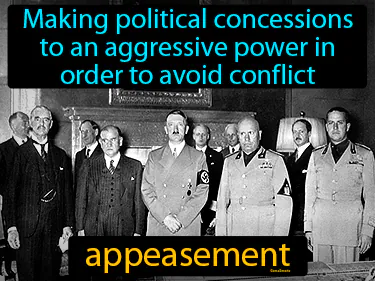
Making political concessions to an aggressive power in order to avoid conflict. Appeasement. In history, appeasement refers to the policy of giving in to the demands of a hostile nation to prevent war, like Britain and France's approach to Nazi Germany before World War II.
Atlantic Charter
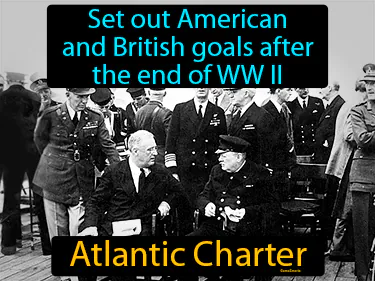
Set out American and British goals after the end of WW II. Atlantic Charter. The Atlantic Charter was an agreement between the U.S. and the UK during World War II that outlined their vision for a peaceful, post-war world.
Axis powers
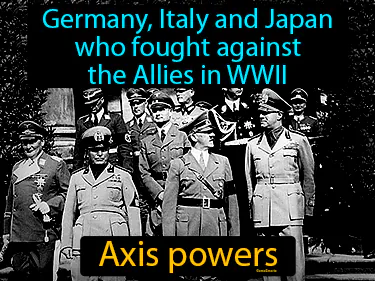
Germany, Italy and Japan who fought against the Allies in WWII. Axis powers. The Axis powers were a group of nations that opposed the Allies during World War II.
Benito Mussolini
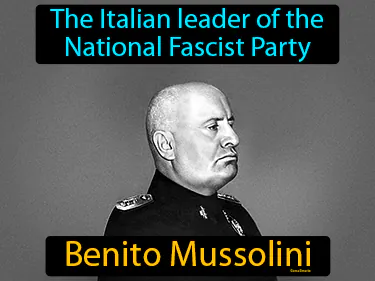
The Italian leader of the National Fascist Party. Benito Mussolini. Mussolini was the dictator of Italy from 1922 to 1943, leading the country during World War II and establishing a fascist regime.
blitzkrieg
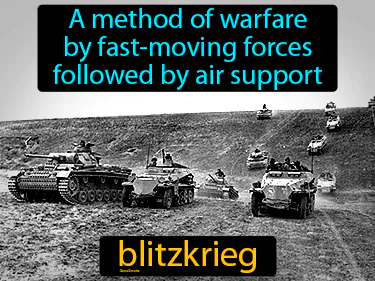
A method of warfare by fast-moving forces followed by air support. Blitzkrieg. Blitzkrieg is a military strategy used by Germany in World War II to quickly overwhelm opponents with speed and surprise attacks.
concentration camp
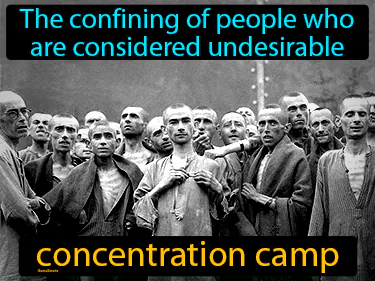
The confining of people who are considered undesirable. Concentration camps were places where large groups of people, often persecuted minorities, were forcibly held and exploited, particularly during World War II.
death camp
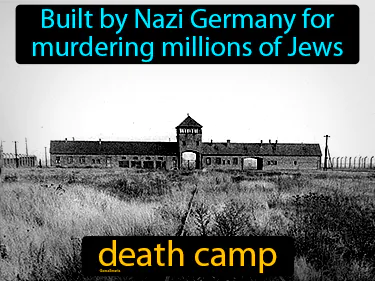
Built by Nazi Germany for murdering millions of Jews. Death camp. A death camp was a facility where Nazi Germany systematically murdered large numbers of people during World War II.
fascism
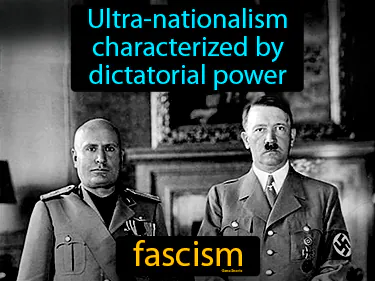
Ultra-nationalism characterized by dictatorial power. Fascism. Fascism is a political ideology that centralizes power under a dictator, suppresses dissent, and often promotes extreme nationalism and racism.
Francisco Franco
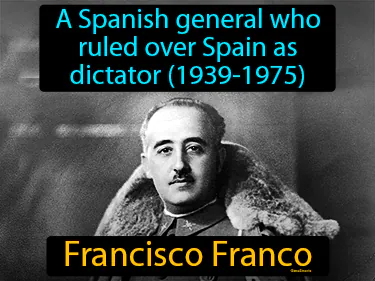
A Spanish general who ruled over Spain as dictator 1939-1975. Francisco Franco. He was a military leader who led Spain under an authoritarian regime after the Spanish Civil War.
genocide
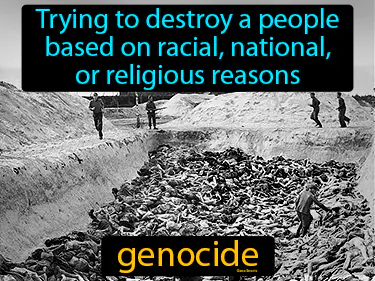
Trying to destroy a people based on racial, national, or religious reasons. Genocide is the deliberate and systematic extermination of a particular group.
Hideki Tojo
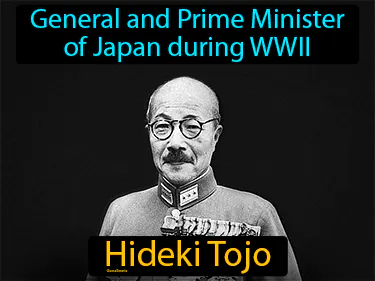
General and Prime Minister of Japan during WWII. Hideki Tojo. He was a military leader who played a significant role in Japan's war efforts and policies during the Second World War.
Holocaust
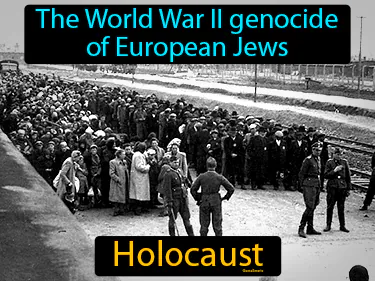
The World War II genocide of European Jews. Holocaust. The Holocaust was the systematic, state-sponsored persecution and murder of six million Jews by the Nazi regime and its allies.
Joseph Stalin
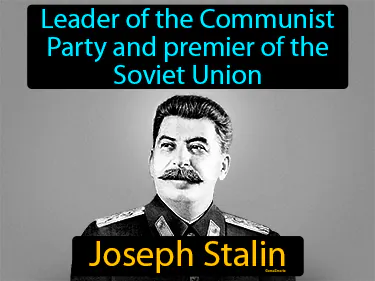
Leader of the Communist Party and premier of the Soviet Union, Joseph Stalin. Joseph Stalin was the dictator who led the Soviet Union through significant industrialization and World War II.
Kristallnacht

A violent riot against Jews throughout Germany in 1938. Kristallnacht. Kristallnacht was a coordinated attack against Jewish people and their properties by the Nazis, marking a significant escalation of anti-Semitic persecution.
Lend-Lease Act
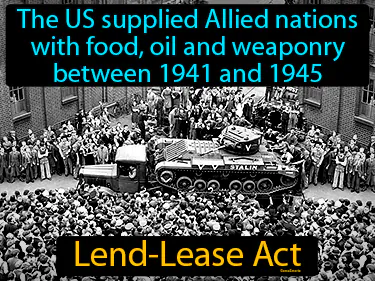
The US supplied Allied nations with food, oil, and weaponry between 1941 and 1945. Lend-Lease Act. The Lend-Lease Act allowed the US to send resources to Allied countries during World War II without requiring immediate payment.
Munich Pact
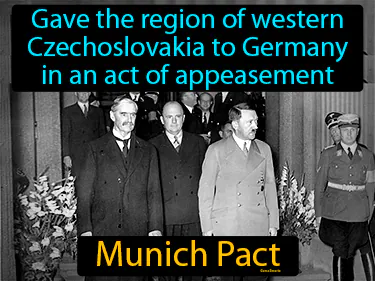
Gave the region of western Czechoslovakia to Germany in an act of appeasement. Munich Pact. The Munich Pact was an agreement in 1938 where Britain and France allowed Nazi Germany to annex parts of Czechoslovakia to avoid conflict.
Nazism
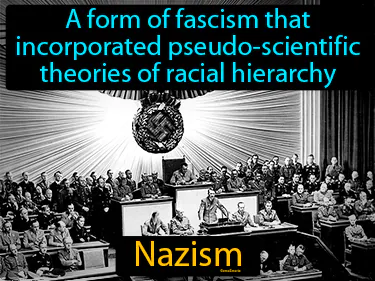
A form of fascism that incorporated pseudo-scientific theories of racial hierarchy. Nazism. Nazism was a totalitarian ideology led by Adolf Hitler in Germany, promoting extreme nationalism and racism, which led to World War II and the Holocaust.
Neutrality Acts
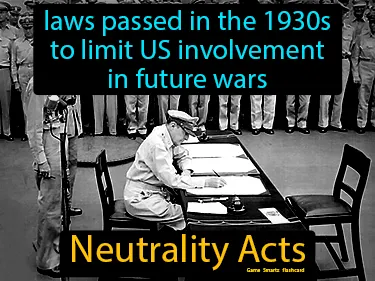
Laws passed in the 1930s to limit US involvement in future wars. Neutrality Acts. The Neutrality Acts were designed to keep the United States out of future conflicts by restricting trade and interactions with warring nations.
Neville Chamberlain
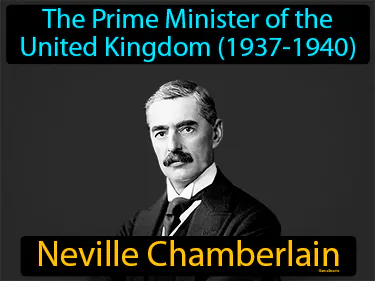
The Prime Minister of the United Kingdom 1937-1940. Neville Chamberlain. He is best known for his policy of appeasement towards Adolf Hitler before World War II.
non-aggression pact
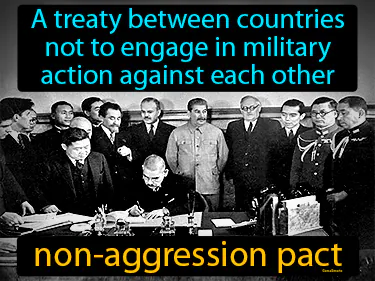
A treaty between countries not to engage in military action against each other. Non-aggression pact. In history, a non-aggression pact is an agreement where countries promise not to attack each other.
Pearl Harbor
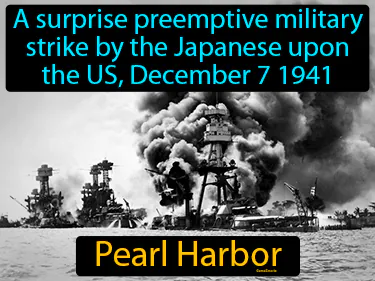
A surprise preemptive military strike by the Japanese upon the US, December 7, 1941. Pearl Harbor. Pearl Harbor was a Japanese attack on a U.S. naval base in Hawaii that led to America's entry into World War II.
Spanish Civil War
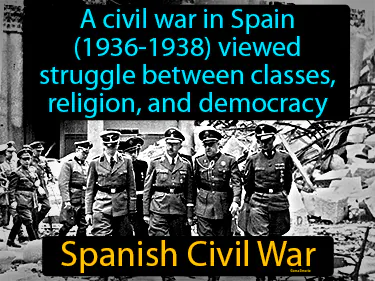
A civil war in Spain 1936-1938 viewed struggle between classes, religion, and democracy. Spanish Civil War. The Spanish Civil War was a conflict between Republicans and Nationalists that shaped the future of Spain.
totalitarianism
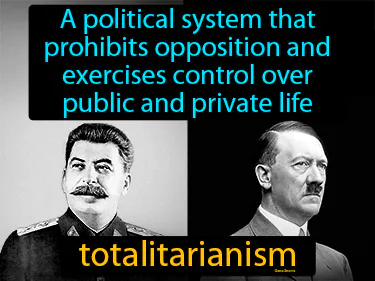
A political system that prohibits opposition and exercises control over public and private life. Totalitarianism. In history, totalitarianism refers to a government that seeks to control every aspect of society and individuals' lives, often through dictatorship.
Winston Churchill
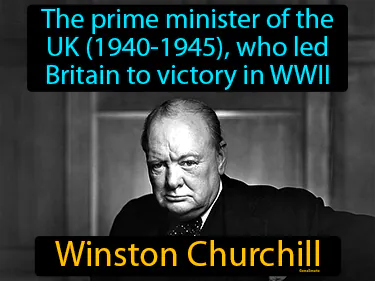
The prime minister of the UK 1940-1945, who led Britain to victory in WWII, Winston Churchill. Winston Churchill was the British leader who helped defeat the Nazis in World War II.
Womens Army Corps
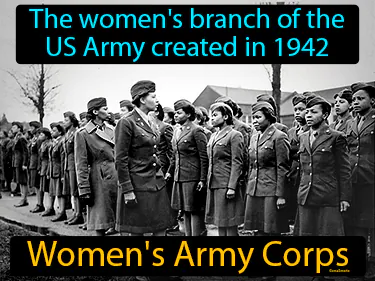
The women's branch of the US Army created in 1942 Women's Army Corps. The Women's Army Corps was a unit that allowed women to serve in non-combat roles in the US Army during World War II.